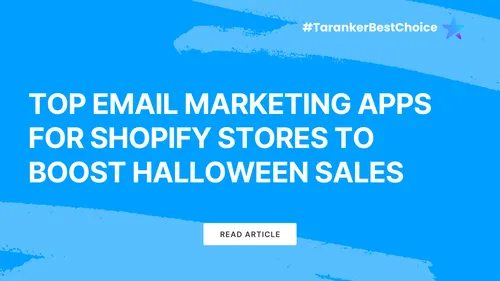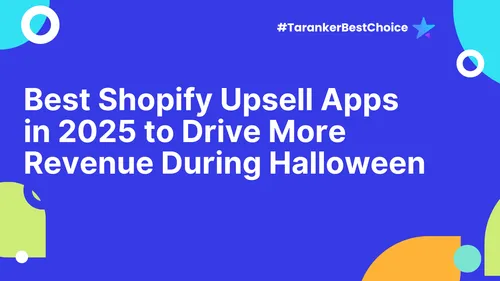In the competitive landscape of e-commerce, establishing a strong brand identity is crucial for differentiation and customer loyalty. For Shopify merchants and online retailers, a well-crafted brand identity not only sets you apart from competitors but also fosters trust and recognition among consumers.
What Is Brand Identity?

Brand identity encompasses the visible elements of a brand—such as logo, color palette, typography, and messaging—that together create a distinctive image in the minds of consumers. It's the cohesive representation of your brand's values, mission, and personality across all customer touchpoints.
Key Components of Brand Identity:
-
Logo: A unique symbol that represents your brand.
-
Color Palette: A set of colors that reflect your brand's personality.
-
Typography: Consistent fonts that align with your brand's tone.
-
Messaging: The voice and tone used in all communications.
-
Imagery: Visual elements that convey your brand's essence.
Why Is Brand Identity Important?
A strong brand identity:
-
Differentiates Your Business: Sets you apart in a crowded marketplace.
-
Builds Customer Trust: Consistent branding fosters reliability and loyalty.
-
Enhances Recognition: Makes your brand easily identifiable.
-
Supports Marketing Efforts: Provides a foundation for cohesive and effective marketing strategies.
How To Build a Strong Brand Identity

Building a compelling brand identity involves several strategic steps:
1. Define Your Brand's Core Values and Mission
Clarify what your brand stands for and its purpose. This foundational understanding guides all aspects of your brand identity.
Action Steps:
-
Identify Your Unique Selling Proposition (USP): Determine what sets your products or services apart.
-
Articulate Your Mission Statement: Summarize your brand's purpose and goals.
2. Understand Your Target Audience
Gain insights into your ideal customers to tailor your brand identity to their preferences and needs.
Action Steps:
-
Conduct Market Research: Utilize surveys, focus groups, and analytics to gather data.
-
Create Buyer Personas: Develop detailed profiles representing segments of your audience.
3. Develop Your Visual Elements
Create visual components that reflect your brand's personality and appeal to your target audience.
Action Steps:
-
Design a Memorable Logo: Ensure it's simple, versatile, and representative of your brand.
-
Choose a Cohesive Color Palette: Select colors that evoke desired emotions and align with your brand's character.
-
Select Appropriate Typography: Pick fonts that are readable and convey your brand's tone.
4. Craft Your Brand Messaging
Develop a consistent voice and tone that resonates with your audience across all platforms.
Action Steps:
-
Define Your Brand Voice: Decide if your communication style is formal, casual, witty, etc.
-
Create Taglines and Slogans: Develop catchy phrases that encapsulate your brand essence.
5. Apply Your Brand Identity Across All Channels
Ensure consistency in how your brand is presented, whether on your Shopify store, social media, packaging, or marketing materials.
Action Steps:
-
Develop Brand Guidelines: Document standards for visual and verbal elements to maintain uniformity.
-
Train Your Team: Educate employees and partners about your brand guidelines to ensure cohesive representation.
Examples of Strong Brand Identities
-
Apple Inc.: Known for its minimalist design, sleek product aesthetics, and a consistent message of innovation and quality.
-
Nike: Features the iconic "swoosh" logo, a bold color palette, and motivational messaging that inspires athletic excellence.
Final Thoughts
Establishing a robust brand identity is a vital investment for e-commerce merchants aiming to build lasting relationships with customers and achieve long-term success. By thoughtfully developing and consistently applying your brand's visual and verbal elements, you create a memorable and trustworthy presence in the marketplace.
Frequently Asked Questions (FAQs)
1. How does brand identity differ from brand image?
While brand identity refers to the intentional creation of elements that represent the brand, brand image is the perception of the brand in the minds of consumers.
2. Can small businesses afford to develop a strong brand identity?
Yes, building a brand identity doesn't require a massive budget. Utilizing tools like Shopify's Logo Maker and focusing on consistency can significantly impact without substantial investment.
3. How often should a brand update its identity?
Brands should consider refreshing their identity when there's a significant shift in the market, target audience, or if the current identity no longer aligns with the brand's values and mission.
4. What role does social media play in brand identity?
Social media platforms are vital for expressing and reinforcing brand identity, allowing direct interaction with customers and showcasing the brand's personality and values.
5. How can I ensure my brand identity appeals to my target audience?
Conduct thorough market research to understand your audience's preferences and tailor your brand's visual and verbal elements to meet their expectations and resonate with their values.













